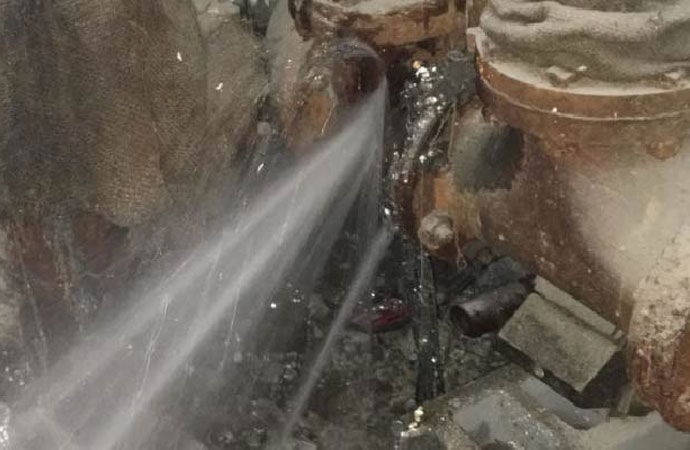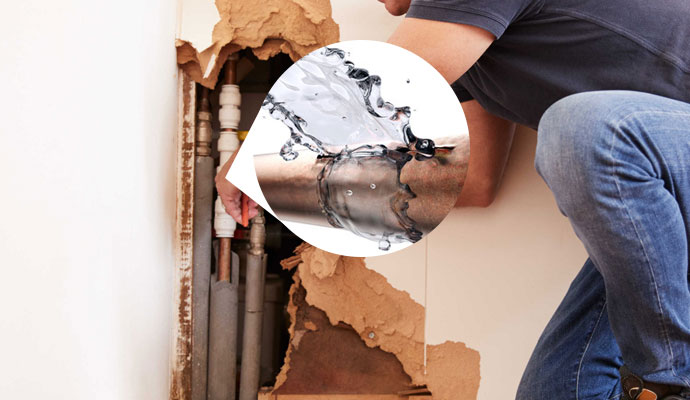Recognizing and Swiftly Fixing a Leaking Pipe: Step-by-Step
Recognizing and Swiftly Fixing a Leaking Pipe: Step-by-Step
Blog Article
The publisher is making a few great pointers related to How to Prepare for Your Dishwasher Installation overall in this great article which follows.

A burst pipeline is a major emergency; you can just stand as you view water you pay dearly to rejoin with the earth. In even worse cases, you see a pool on your cooking area floor, which is an excellent trip threat, particularly if you have youngsters around. If the pipe that ruptured was in your walls, trouble: you may require to repaint that entire section.
Just how can a calamity like a ruptured pipe be prevented as well as managed? Well, by listening to your specialist emergency plumbings and complying with these rules.
Exactly how do I recognize when my pipelines have burst?
Varying water stress
Pipes do not just burst in a day. You might have discovered that your kitchen area faucet or shower doesn't run promptly when you turn the faucet. It might pause for a few secs and then blast you with even more force than normal.
In other circumstances, the water may appear regular initially, then decrease in pressure after a couple of secs.
Wet walls as well as water discolorations
Before a pipeline bursts, it will leak, the majority of times. If this relentless dripping goes unnoticed, the leakage may finish right into a vast gouge in your pipe. One simple method to avoid this emergency is to keep an eye out for damp wall surfaces advertisement water stains. These water stains will lead you right to the leak.
Puddles under pipes and sinks
When a pipe bursts, the discharge develops a pool. It may appear that the puddle is growing in size, and no matter how many times you wipe the puddle, in a few minutes, there's another one waiting to be cleaned. Typically, you may not be able to trace the pool to any visible pipelines. This is an indicator to call a specialist plumber.
Untraceable trickling sounds
Pipeline bursts can happen in the most unpleasant places, like within concrete, inside wall surfaces, or under sinks. When your house goes quiet, you may be able to listen to an aggravatingly relentless leaking sound. Even after you have actually checked your shower head and also kitchen area faucet, the leaking might continue.
Dear reader, the trickling may be coming from a pipe inside your walls. There isn't much you can do about that, except inform a professional plumber.
Turn off the Water
When water ices up, it broadens in volume by concerning 9 percent. And it expands with remarkable pressure: The pressure inside pipes may go from 40 extra pounds per square inch to 40,000 psi! No pipeline can hold that much pressure, so it breaks open. The break might happen where the ice types, yet more frequently, it happens where water stress discovers a weak spot in the pipeline. That might be inches or even feet from the icy area. Find the water shutoff valve and switch off the water to prevent more damages. You might additionally need to shut down the power also, depending on where the leakages occurs and also how big it is.
Infected water
Lots of people assume a ruptured pipe is a one-way electrical outlet. Quite the contrary. As water drains of the hole or gouge in your plumbing system, impurities discover their way in.
Your water might be contaminated from the resource, so if you can, check if your water storage tank has any troubles. However, if your drinking water is provided and detoxified by the city government, you need to call your plumber promptly if you see or smell anything funny in your water.
What do I do when I find a ruptured pipe?
Your water meter will certainly remain to run even while your water wastes. To decrease your losses, find the primary controls and also turn the supply off. The water mains are an above-ground framework at the edge of your residential or commercial property.
How to Fix & Detect a Leaking Pipe
How Do I Know if a Pipe is Leaking?
Leak detection tests can help you determine if your pipe has a leak. Even if you don’t see an apparent leak, you should still conduct leak detection tests regularly to save water and money—and prevent major damage to your home.
Water meter. It can be helpful to figure out what your usual water meter usage numbers are and then monitor them regularly. To monitor your meter, first, turn off all water faucets in your home. Check the meter and write down the numbers. In a few hours, check the meter again. If the numbers have changed, you have a leak. Water gauge. Use a water gauge to test your water pressure. Your showerhead should produce a certain amount of water pressure based on its model and design. If the pressure is lower than it is supposed to be for that specific showerhead, your home likely has a leak. Puddles. Look inside your bathroom, laundry, and kitchen sink cabinets. Puddles around the cabinets or around toilets, tubs, showers, and washing machines indicate the presence of a leaking pipe. You may also notice loose tiles, peeling or flaking paint, or mold caused by water accumulation. Napkin test. Even if you don’t see any puddles, you may still have a leak. You can test for water leaks in the bathroom, laundry, and kitchen by wiping below-sink connections with a napkin, paper towel, or piece of toilet paper. If it becomes damp, you probably have a leaking pipe under the sink. Discolored walls. Walls that are discolored—usually with brown or yellow stains—or bulging might mean that they have been impacted by water damage caused by a leaking pipe. Smell. A leaky pipe will create sitting water, and over time, that water may develop a musty smell. If your home smells musty, but you can’t locate the source, it may be due to a leak. Steps for Fixing a Leaking Pipe
A leaky drain can be remedied by tightening the pipe base, replacing the drain seal, caulking the rim, and tightening the pipe nut. Similarly, a leaking toilet pipe can be treated by tightening the packing nut. You may also need to replace the valve. A leaky faucet may just need tightening or replacement of the washers. If that doesn’t work, consider replacing your faucet. If your pipe has a hole in it, you may want to use a pipe leak sealer or pipe leak tape. This quick fix for water pipe leaks can also temporarily fix a copper pipe leak. https://www.ahs.com/home-matters/quick-tips/how-to-tell-if-pipes-are-leaking/

I am just very inquisitive about How to install a dishwasher safely and I hope you appreciated my entry. Liked our posting? Please share it. Help someone else discover it. Thanks for your time. Visit us again soon.
Need it done? Dial! Report this page